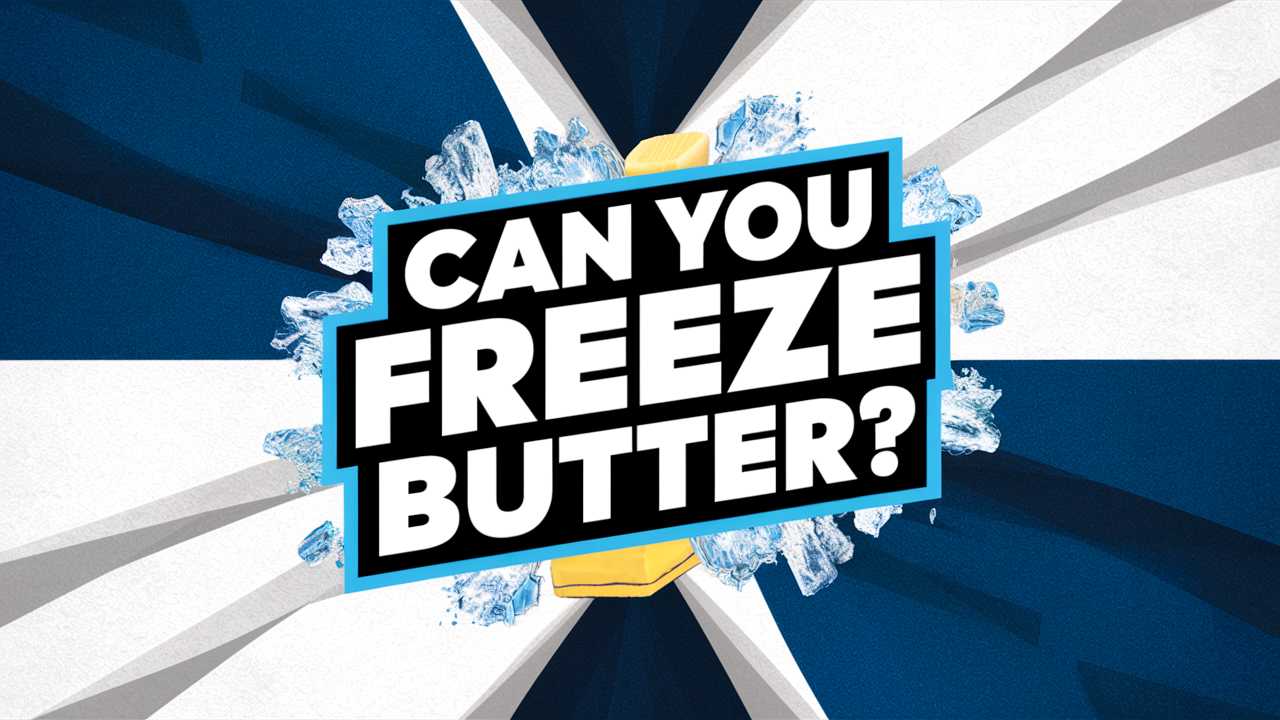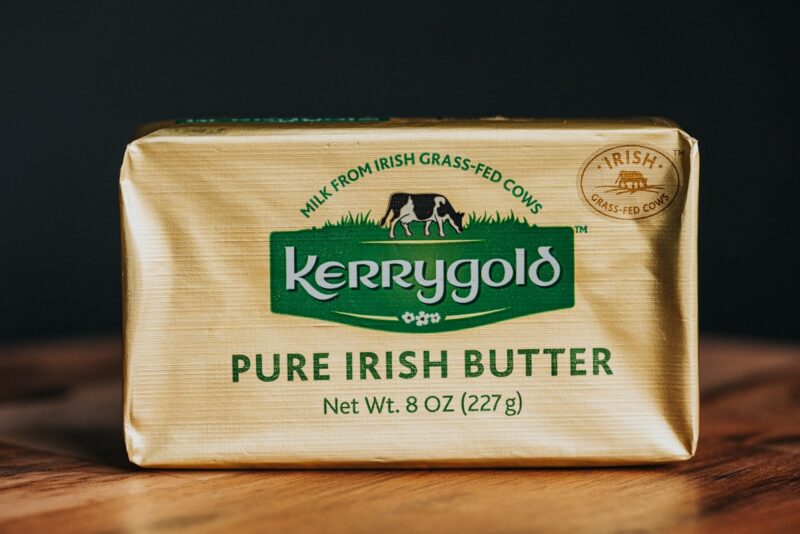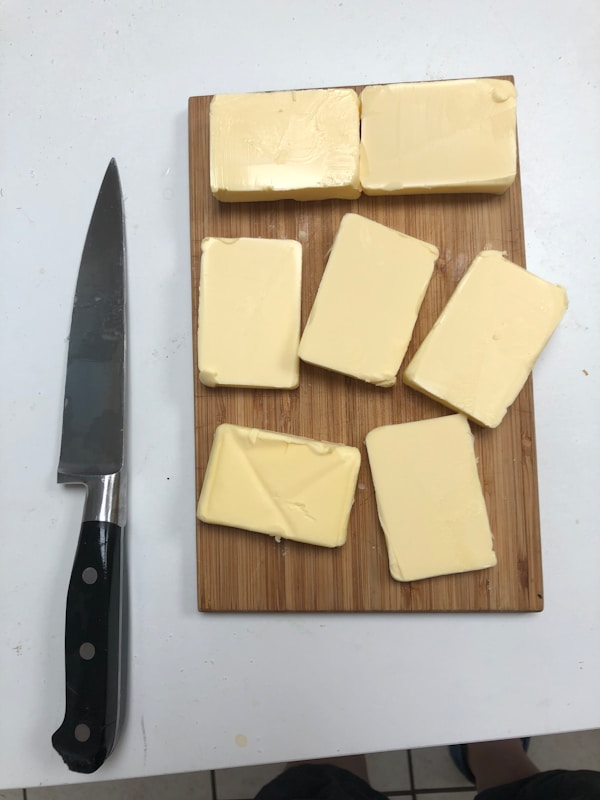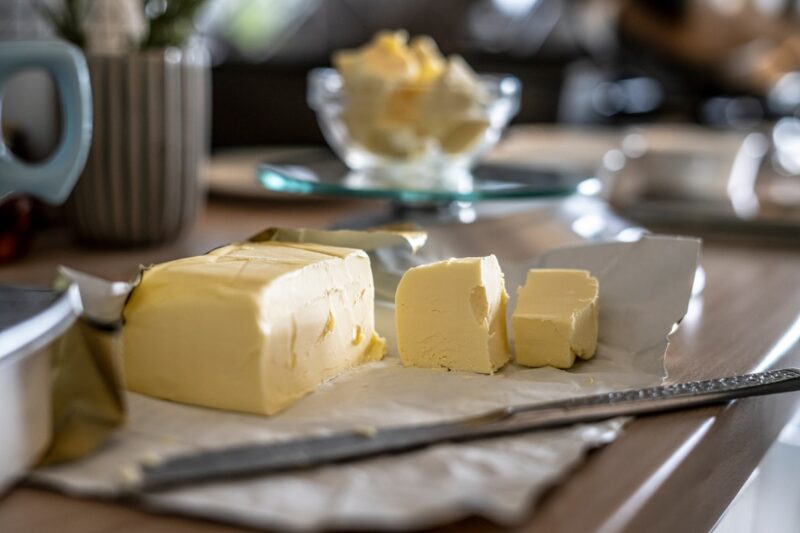Butter is a staple in many kitchens around the globe, celebrated not only for its flavor but also for its versatility. When you run out of butter halfway through a recipe, it can feel like a mini-crisis. However, many people wonder, “Can you freeze butter?” and more importantly, “How do I do it properly?”
In this comprehensive guide, we’ll explore every aspect of butter freezing, from practical tips to historical insights and even its culinary applications.
Can You Freeze Butter?
The straightforward answer is yes! Butter freezes exceptionally well, maintaining its flavor and texture over time when stored properly. A well-wrapped piece of butter can last up to six months in the freezer without losing quality.
Why Freeze Butter?
Freezing butter can help you manage your grocery bills more effectively and prevent waste. For instance, buying in bulk often results in savings, especially if you find a fantastic deal on high-quality, organic butter. Additionally, if you have leftover butter from a recipe, freezing it prevents spoilage.
Benefits of Freezing Butter
Extended Shelf Life: Butter can last for months in the freezer, far outpacing its refrigerator lifespan (which typically ranges from 1 to 3 months).
Reduced Waste: Freezing allows you to save surplus butter, accommodating changes in cooking habits or recipes.
Convenient Portioning: Freezing in smaller portions makes it easy to grab just what you need for a recipe.
How to Freeze Butter
Freezing butter is simple, but proper technique is crucial to maintain its quality. Here’s how to do it right:
Step-by-Step Guide
Wrap it Up:
If your butter comes in a stick, simply keep it in its original wrapper. For larger blocks, wrap the butter tightly in plastic wrap or aluminum foil, ensuring there are no air pockets.
Use an Airtight Container:
Transfer wrapped butter into an airtight container or a heavy-duty freezer bag. Squeeze out as much air as possible to prevent freezer burn.
Label and Date:
Use a permanent marker to label the container with the date, as this will help you keep track of how long it’s been in the freezer.
Portion Sizes:
If you prefer portioning, consider cutting the butter into smaller pieces or tablespoons. This makes it more manageable for future uses.
Place in the Freezer:
Finally, make sure to place your butter in the main portion of the freezer rather than the door, which is subject to temperature fluctuations.
Thawing Frozen Butter
When you’re ready to use your frozen butter, proper thawing is key. The best approach is to transfer it from the freezer to the refrigerator for gradual thawing, taking about 24 hours. However, if you’re in a rush, you can also microwave it on a low setting for a few short bursts, being very careful not to melt it.
Culinary Considerations
Texture Changes
Although butter freezes well, some changes in texture can occur when thawing. For example, whipped or aerated butter may lose its lightness, while blocks of butter typically retain their structure. When using thawed butter, consider how the texture will affect your recipe.
Flavor Preservation
While frozen butter retains its flavor, it is important to consider how other items in your freezer may impact its taste. Strong odors can permeate butter, so keep it sealed and stored away from pungent foods.
Cooking and Baking Tips
When using thawed butter for baking, some experts suggest letting it sit out for a short period to bring it back to room temperature. This can often make a difference in how well it incorporates into batters and doughs.
The Science Behind Butter Freezing
Understanding how butter reacts to freezing involves a bit of chemistry. The emulsion in butter consists of water and fat, which can separate if not properly stored. Rapid freezing and quality packaging can help maintain that ideal structure.
What Freezing Does to Fat and Water Content
The water in butter will freeze while fat remains relatively unaffected. This transition can lead to ice crystal formation if there’s too much air or moisture. The smaller the crystals, the less disruption to texture when thawed. Hence, wrapping and sealing are crucial.
Freezing Points and Temperature
Butter’s composition gives it a freezing point lower than ordinary water due to its fat content. Understanding this concept allows you to make informed decisions about how to store butter in various temperatures. Aim to keep your freezer at 0°F (-18°C) for optimal conditions.
Common Questions and Myths
Does Freezing Affect Health?
No, freezing does not harm the nutritional profile of butter. It maintains its fat content and associated nutrients as long as it is stored properly.
Can You Freeze Other Dairy Products?
Yes, other dairy products can also be frozen, including cheese and cream. However, each type requires different handling and may affect taste or texture post-thaw, which is worth researching before attempting.
Is It Safe to Freeze Butter?
Absolutely! The freezing process inhibits microbial growth, making it a safe preservation method.
Should You Freeze Butter Before or After Opening?
Both options are valid; however, if you buy in bulk and anticipate not using it soon, it’s best to freeze before opening to maximize freshness.
Understanding Butter: Types and Uses
Before we address the question of freezing, let’s appreciate the different types of butter available. This will highlight why they might require different approaches to freezing and storage.
Types of Butter
Salted vs. Unsalted:
Salted butter, as the name implies, contains salt, which acts as a preservative. It has a longer shelf life than unsalted butter, which is ideal for baking due to its pure flavor profile.
European Style:
This butter typically contains a higher fat content (usually around 82% vs. the standard 80% in American butter). This fat richness makes it superb for pastry, but it may require different handling when it comes to freezing.
Cultured Butter:
Made from fermented cream, cultured butter has a tangy flavor that can elevate both savory and sweet dishes. Freezing will not diminish its unique taste, making it a worthy candidate for this method of preservation.
Plant-Based butters:
These alternatives to dairy butter can be frozen as well but often have different compositions that might affect their texture after thawing.
Knowing the variety of butter you use is essential for understanding how to freeze and use it in the kitchen.
Practical Uses of Butter
Butter plays many roles in our cooking and baking. From creating flaky pastries to enriching sauces, its uses are manifold. Here are a few common applications:
Baking: Cakes, cookies, and pastries often require butter for both texture and flavor. A well-prepped cookie dough can greatly benefit from having butter on hand, whether fresh or frozen.
Cooking: Sautéing vegetables or making a roux for sauces involves the use of butter. Having a stock of it, even if some is frozen, means that spontaneous cooking decisions are less stressful.
Finishing: A pat of butter melted on a steak or fresh vegetables can elevate a dish. Keeping frozen butter allows for immediate access to that silky finish whenever it’s needed.
Real-Life Experiences with Freezing Butter
Exploring the experiences of home cooks and professional chefs can add a personal touch to the topic.
Anecdotes from the Kitchen
One home cook recounted how freezing butter helped her survive the holiday baking season. “I always buy extra during sales, but I once forgot to use them, leading to soggy butter that nobody wanted. After that, I made it a habit to freeze what I didn’t immediately need.”
On the professional side, a pastry chef shared their thoughts: “I often keep various butters on hand. Having different types frozen enables me to pull out exactly what I need without compromising on flavor or texture.”
Community Insights
Forums and cooking blogs showcase a wealth of tips about butter storage, often sharing methods for dealing with leftover butter from recipes. It’s fascinating to see how many people have adopted freezing as their go-to solution.
Butter Beyond the Freezer: Creative Uses
While freezing butter is an excellent way to preserve it, there are numerous creative uses for leftover and new butter that can enrich your culinary adventures.
Compound Butters
A delightful way to utilize extra butter is to create compound butters. By mixing softened butter with various herbs, spices, or other flavors, you create a versatile ingredient for finishings, spreads, or cooking.
Infused Butter
Encouraging your culinary creativity, consider infusing butter with flavors like garlic, honey, or citrus zest before freezing. Labels can direct your cooking adventures when you pull them out later, making meals exciting.
Baking and Cooking Innovations
Experiment with butter in innovative ways: use it to create sauces, buttercreams, or even scrumptious desserts. Having unique flavored butters at the ready can unleash new layers of flavor in everyday dishes.
Conclusion
Freezing butter opens up a world of convenience and culinary creativity. By following simple steps to store it properly and understanding its diverse uses, you can turn what might otherwise be a kitchen hassle into an opportunity for delicious meals. Remember, the next time you buy butter, think of it as not just a cooking essential but also a versatile ingredient waiting to inspire your next kitchen creation.








